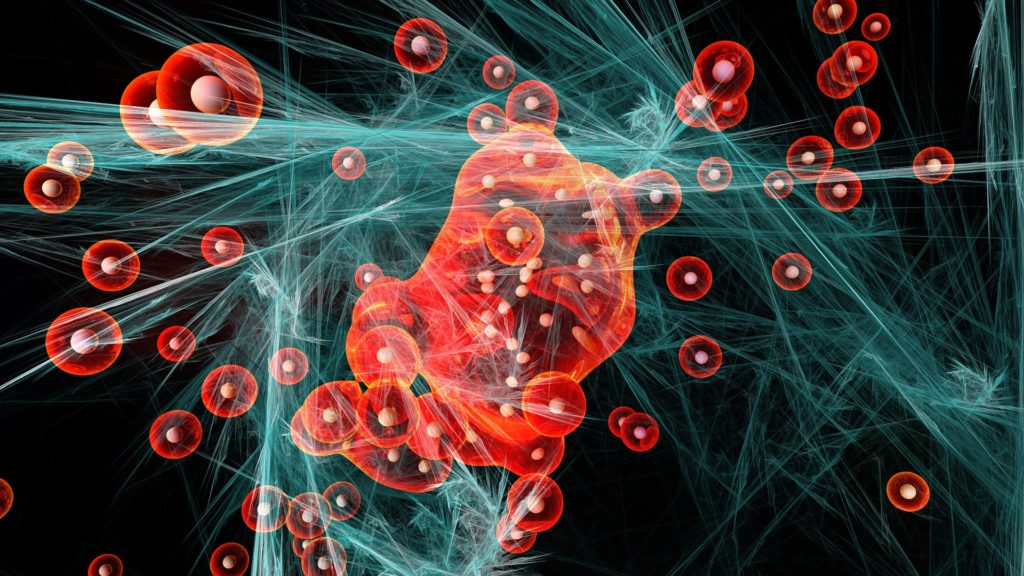When studying the origin of life on Earth, scientists must rely on past data, physical laws, and models instead of direct observations. After all, we can’t know for sure what the world was like 4 billion years ago, when the first microscopic life was formed from a mixture of non-living molecules. But knowing about early life is important for understanding modern life, as well as the potential for life to exist elsewhere in the universe.
Scientists from around the world recently collaborated and used computer models to speculate about important molecules called amino acids. Amino acids are small molecules which all life on Earth use to perform microscopic tasks. DNA, another essential molecule used by all life, is often called the “building blocks of life,” but this comparison would be better given to amino acids. DNA is a long chain of molecules that act more like a blueprint, recording the order in which amino acid building blocks are put together.
Amino acids can be thought of as the letters of an alphabet. There are only 20 amino acids used by life, but they are put into an almost infinite number of different combinations, like words. These “words” are actually very large molecules called proteins. Proteins do almost everything required to keep us alive, from breaking down what we eat to making our muscles move
All known life uses the same set of 20 amino acids, but there are actually thousands of possible amino acids. So why these 20?
Researchers used computer programs to create a database of 1,913 potential amino acids. Then, they had the computer randomly create sets of 20. The researchers decided on three criteria to describe how “good” these sets would be for use by a living organism. The criteria used were size, electrical charge, and ability to interact with water. These three criteria influence which protein will result from a string of amino acids, and what that protein can do. A “good” set of amino acids would have a diverse range of characteristics, making the set as a whole able to create proteins which perform many different biological functions. Essentially, this involves creating a new “alphabet,” one that is best suited to creating as many different and useful “words” as possible. As with language, having many words increases the complexity of what you can do with those words.
Using these computer models, the scientists came up with 100 million new amino acid sets. Only six of these sets were deemed “better” than the set that is used by life, based on the three criteria determined by the scientists. However, these six sets would all require more energy for an organism to create and use, and therefore might not be “better” after all.
This means that out of millions of possibilities, early life managed to create a set of amino acids that is close to, if not the best, option. This is a strong indication that these amino acids were not randomly chosen. In fact, it seems likely that many were not present in the environment of early Earth, but were actually later “invented” by life. This means that through the very slow process of evolution, life created its own alphabet of molecules. Like the computer simulation, there were many trials until the optimal combination allowed life to flourish
In addition to the insight this study gives us about amino acids and early life, it also is an example of how computers and technology continue to expand science and create new ways of answering questions. We may not be able to travel back in time 4 billion years to witness the beginnings of life on Earth, but through technological advances we can start to understand more about how the most basic aspects of life were put together. If life on Earth chose the best set of amino acids with which to function, maybe alien life, if it exists, would use a similar set. Studies like this increase our understanding of the origin of life on Earth and how life might exist elsewhere in the universe.


